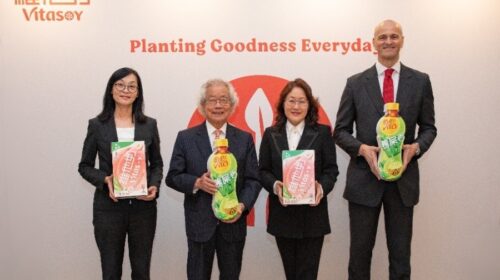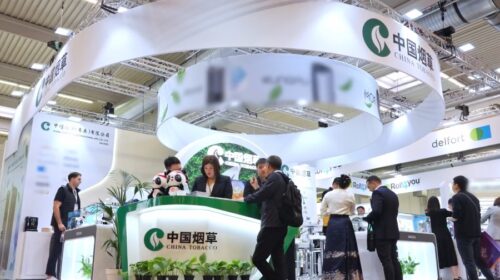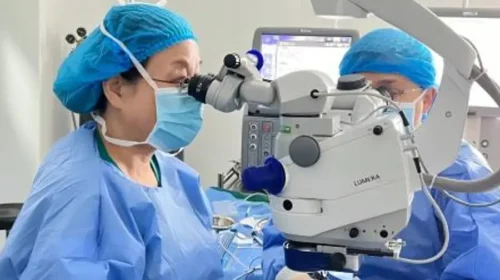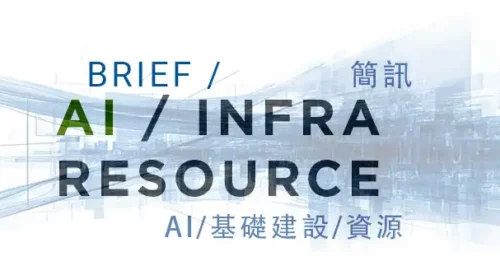Gasping Huabao’s profits go up in smoke

The vaping device and component maker warned it will report a pre-tax loss of up to 455 million yuan last year after taking up to 1 billion yuan in one-time charges
Key Takeaways:
- Huabao swung sharply into the red last year, as it took large charges related to its flavors and reconstituted tobacco leaf businesses
- The company’s close ties to China’s state tobacco monopoly that were once one of its biggest assets are now becoming a liability
By Edith Terry
Recent smoke signals warning of huge losses at vaping giant Huabao International Holdings Ltd. (0336.HK) and its subsidiary, Huabao Flavours & Fragrances Co. Ltd. (300741.SZ), weren’t a huge surprise in many ways. After all, the company operates in a complex Chinese vaping environment where tastes and regulations are constantly evolving.
Disastrous nine-month results from the Shenzhen-listed Huabao Flavours, which inevitably reflected issues at the Hong Kong-listed parent, meant 2024 was unlikely to end well. The question now is what went wrong, and can Huabao put some wind back into its sails by taking write-offs now and getting back in sync with the latest industry trends.
The Hong Kong-listed Huabao on Jan. 24 warned that it expected to report a pre-tax loss of between 305 million yuan ($41.9 million) to 455 million yuan for last year, with audited results expected by the end of March. The loss marks a sharp swing to the red from Huabao’s 416 million yuan pre-tax profit for 2023.
The loss includes a goodwill impairment charge of between 480 million yuan and 530 million yuan at Huabao Flavours, together with other goodwill impairment charges of between 274 million yuan to 374 million related to the company’s reconstituted tobacco leaf business, as well as several other smaller non-cash expenses. All told, Huabao is taking between 850 million yuan and 1 billion yuan in one-time charges, equal to nearly one-third of its revenue of 3.3 billion yuan in 2023.
The big charges come as Huabao and its peers try to chart a way forward in China’s choppy vaping landscape, characterized by both changing regulation and consumer tastes.
Huabao Flavours, meanwhile, also announced preliminary results for 2024 the same day as its parent’s profit warning. That included an annual loss of between 260 million yuan to 390 million yuan, flipping its profit of 379 million yuan in 2023. Meantime, Huabao Flavours forecast its revenue would be flat to down as much as 12%, clocking in at between 1.3 billion yuan to 1.48 billion yuan for the year, compared with 1.48 billion yuan in 2023.
Most of the Shenzhen-listed company’s losses came from the same goodwill impairment charges reported by the parent, with an additional 80 million yuan to 120 million yuan in an estimated provision for credit losses and asset impairments, including inventory, accounts receivable and biological assets.
So, how did the company get to this state?
Huabao’s initial response to China’s regulatory tightening against e-cigarettes, beginning in 2022, was to focus on providing tobacco flavonoids and ingredients to China National Tobacco Corp. (CNTC). After all, tying yourself to the country’s state-run tobacco monopoly probably seemed like a safe bet, especially when the same state monopoly is also closely tied to the industry regulator.
But that decision also meant tying itself to a sluggish domestic market for vaping products, and also embracing a primary customer that more broadly saw vaping as a threat to its core tobacco business. According to data aggregator Statista, the overall market for e-cigarettes in China, now restricted to only tobacco flavors, is growing at an anemic 3% annually, with projected revenues of $1.2 billion in 2025, compared to $9.9 billion for the U.S. market.
Seeking relief overseas
To relieve the pressure from difficulties in its home market, Huabao is turning increasingly to international markets. In its financial report for the first half of 2024, it noted the regulatory environment overseas was loosening relative to China, and that it was selling its domestic business in reconstituted tobacco leaves at a valuation of 140 million yuan.
That sale seems to show that Chairman Zhu Linyao, also known as Chu Lam Yiu, is trying to disentangle herself from her massive but perhaps not-so-reliable client in China’s tobacco monopoly, which is at once a customer but is also increasingly lukewarm on vaping. While waiting to find a buyer at that time, it reclassified the reconstituted tobacco leaf business in China as “assets held for sale” and took an impairment provision of 47.9 million yuan against it.
Huabao Flavours’ stock took an immediate hit after the Jan. 24 announcements, and its shares are down nearly 10% since then. The Hong Kong-listed parent company’s shares also dropped, but by a milder 4% over the period.
The downbeat news wasn’t completely out of the blue, since the Hong Kong-listed Huabao’s report for the first half of last year, issued in late August, contained signals of turbulence. Those included an 81% collapse in its profit for the six-month period to 30 million yuan, even as its revenue rose 3% to 1.6 billion yuan.
The company blamed the big profit decline on 42 million yuan in share-based compensation expenses for Huabao Flavours during the period, along with an asset write-off of 20.2 million yuan for its Yancheng City Chunzhu Aroma unit. That unit, which produces low-carbon alcohol, esters, acids, aldehydes and other food flavorings, had 129 million yuan in revenues for the six months, up 58.5% year-over-year. But its operating profit fell by 52.6% to 5.5 million yuan.
Huabao and its peers all trade at high price-to-earnings (P/E) ratios. But that’s mostly because their profits are rapidly shrinking in the difficult environment that is seeing demand fade due to both tough regulatory conditions as well as dwindling popularity for the vaping fad that was all the rage several years ago.
Hong Kong-listed Huabao’s trailing P/E ratio stands at 51 and its market cap is still relatively large at HK$6.55 billion ($853.8 million), even though the latter figure was more than 10 times higher at its peak at the height of the vaping craze. By comparison, peer RLX Technology (RLX.US) trades lower at a P/E ratio of 32.3, and Smoore International (6969.HK) trades at 43.
No analysts polled by Yahoo Finance follow either of the Huabao stocks, which probably speaks to the company’s uncertain outlook. But analysts are generally bullish on Smoore and RLX, which are also both looking to international markets in the face of challenges in China.
Part of the reservations toward Huabao could owe to ongoing fallout from the official interrogation of Chairman Zhu Linyao and her son and co-chair, Lam Ka Yu, two years ago. She walked free in July 2023 after more than a year under house arrest. But her greatest success – penetrating the State Tobacco Monopoly Administration and CNTC – may now be a weakness, preventing her from exploring international opportunities more aggressively and also holding out the potential for future legal tangles.
To subscribe to Bamboo Works free weekly newsletter, click here






